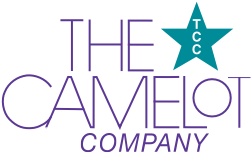Don’t let the government catch you marking imports incorrectly.
Maybe you’re a customs broker. Maybe you’re someone who pays attention to where the things they buy come from. Maybe you’re in sourcing and are constantly looking for new markets or where your competitors are buying theirs. Regardless of your reason for looking where things are made, it is equally important to know that there are very strict government rules governing how you mark where those things are made.
Have you ever had CBP stop a shipment because it was NLM, or “Not Legally Marked”? The time and money spent remediating improperly marked merchandise is something an importer only needs to experience once, but the impact reverberates through their supply chain for long after the single shipment has come and gone.
Importers designing, engineering and/or sourcing an imported product also need to ensure the packaging includes proper country of origin marking. It is not the first consideration – sometimes it isn’t even a consideration to begin with – but it can lead to additional delays, costs to remediate and a pattern of future shipment examinations until the government is satisfied it is no longer happening.
Why is marking important?
The stated goal of the U.S. government is, “To inform the ultimate purchaser in the United States of the country in which the imported article was made.”
For laymen wanting an understanding of marking at a high level, we recommend this Informed Compliance Publication, available on CBP’s website. For the compliance officers and lawyers in the audience, have a look at 19 CFR 134.
Where do most importers run into trouble with marking?
If a company is buying a product being sold in other countries around the world, the manufacturer or exporter is not always focused on the marking requirements of each of the purchasing countries. As such, another country may have a language requirement (in the case of Canada, bilingual packaging), and some countries may not require a country of origin at all.
What are the two most frequent marking errors?
The majority of marking errors that Customs finds and pursues falls into one of two categories.
- Goods that are not marked at all – this is the most easy-to-find infraction. We personally had a situation for a promotions importer where a shipment of deflated footballs from India were not marked and we spent an afternoon putting “Made in India” stickers on each and every one of them.
- Goods where the country of origin and the importer’s name and address are not within reasonable proximity of one another.
In the case of number two, this means that the importer’s name and address are in one place, but the country of origin is elsewhere on the same side or another side of the packaging. In CBP’s eyes, they see this as an inadvertent deception to the ultimate purchaser, giving them a false impression the goods are the product of the country with the full name and address, rather than the actual country of origin.
This is an example of good marking – with the importer’s U.S. address and the country of origin in close proximity to one another:
What are the ramifications of getting caught with a marking error?
Customs will require that the goods be legally marked with the country of origin before they can be sold into the commerce of the United States. This means an illegally marked shipment must be held intact until CBP has signed off the marking has been completed.
Importers have tried and failed to give CBP a sample and not mark the balance of a shipment. This is against the law and could lead to a penalty of 10% of the ad valorem value of the goods.
In addition to the Customs penalty, CBP will make a note in their targeting system against that importer and will likely randomly select future shipments from both the offending supplier and other suppliers to ensure compliance with the marking regulations. At a time when supply chains are struggling to keep merchandise moving, any unnecessary delay should be avoided.
Talk to Camelot before you ship to ensure marking compliance.
As a licensed customs broker, we look at products in a complementary fashion to our customers. While our customers are the subject matter experts on sourcing, design, engineering and selling, we are the experts at classification, country of origin marking, valuation and entry. Consulting Camelot as part of the sourcing process can be a proactive step towards preventing delays caused by regulatory non-compliance.
